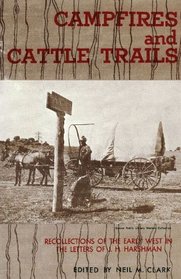Search -
Campfires and Cattle Trails; Recollections of the Early West in the Letters of J. H. Harshman.
Campfires and Cattle Trails Recollections of the Early West in the Letters of J H Harshman
Author:
The Harshman letters concern a colorful and eventful period in the winning of the West. They are fragments of history, not history as usually understood. They attempt no explanations of major events. They do tell, vividly, some of the best-remembered things that a boy and young man of no special importance saw and took part in. — For eight years ... more »
Author:
The Harshman letters concern a colorful and eventful period in the winning of the West. They are fragments of history, not history as usually understood. They attempt no explanations of major events. They do tell, vividly, some of the best-remembered things that a boy and young man of no special importance saw and took part in. — For eight years ... more »
ISBN-13: 9780870041952
ISBN-10: 0870041959
Publication Date: 1970
Pages: 192
Rating: ?
ISBN-10: 0870041959
Publication Date: 1970
Pages: 192
Rating: ?
0 stars, based on 0 rating
Publisher: Caxton Printers Ltd
Book Type: Paperback
Members Wishing: 1
Reviews: Amazon | Write a Review
Book Type: Paperback
Members Wishing: 1
Reviews: Amazon | Write a Review
Genres:




